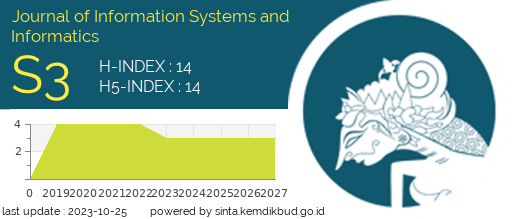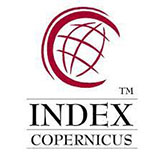User Requirements in Enterprise Resource Planning Systems Adoption: A Case of Botswana’s Higher Institutions
Abstract
ERP systems are the largest software applications adopted by universities, along with quite significant investments in their implementation. However, unlike other applications, limited research has been conducted regarding the application of this system in higher education in Botswana. This study aims to identify user requirements in the adoption of enterprise resource planning (ERP) systems in Botswana’s higher education institutions. This study was conducted in three higher education institutions in Botswana. This study adopted the quantitative methodology of using surveys to understand ERP adoption in higher education and proposed a model that could be used to guide business information systems requirements to appropriate ERP systems in a higher educational environment. Based on the findings, the study proposed a conceptual model of ERP system adoption in higher education institutions using six success dimensions. The six success dimensions are user requirements, user satisfaction, information quality, service quality, institutional impact, system quality, and faculty/management impact. Only information quality was rejected from the model. The six success dimensions are the basis through which a higher education institution can understand user requirements in implementing an effective ERP.
Downloads
References
Z. Ahmer, ‘Usage of enterprise resource planning systems in higher education institutions in Pakistan,’ .2018.
M. P. Mexas, O. L. P. Quelhas, and H. G. Costa, ‘Prioritization of enterprise resource planning systems criteria: Focusing on construction industry,‘ International Journal of Production Economics, 2012, 139(1), pp. 340-350.
M. J. Goldberger, and J. J. Hynes, ‘A Key to Success in Selecting the Right Technology Partner is Pregame Preparation by the Fund Office and Trustees,’ Benefits Magazine, March,’ 2016, pp.18-23.
R. B. Kvavik, R. N. Katz, K. Beecher, J. Caruso, P. King, J. Voloudakis, and L. A. Williams, ‘The promise and performance of enterprise systems for higher education,’ Boulder, Colo.: EDUCAUSE Center for Applied Research, 2002, vol. 4.
M. Matešić, K. Vučković, and Z. Dovedan, ‘Social software: teaching tool or not?,’ 2009.
O. T. Eyitayo, ‘Enterprise resource planning (ERP) systems–is Botswana winning? A question on culture effects,’ Issues in Informing Science and Information Technology, vol. 11, no. 1, pp. 047-055, 2014.
B. Brown, and R. Mooketsi, ‘Experiences of enterprise resource planning system at a flagship university in Africa: Familiarity, barriers and way forward,’ South African Journal of Higher Education, vol, 32, no, 3, 249-279, 2018.
P. Y. Thomas, ‘Evaluating the performance of academic and student administration system in its post-implementation phase: a case study at the University of Botswana,’ 2017.
A. M. Tobie, R. A. Etoundi, and J. Zoa, ‘A literature review of ERP implementation in African countries,’ The Electronic Journal of Information Systems in Developing Countries, vol. 76, no, 1, pp. 1-20, 2016.
W. Luo, and D. M. Strong, ‘A framework for evaluating ERP implementation choices,‘ IEEE Transactions on Engineering Management, vol. 15, no. 3, pp. 322-333, 2004.
W. A. Swaner, ‘Strategies for Implementing a Successful Enterprise Resource Planning System,’ Dissertation. Walden University Scholar Works, 2016.
G. K. Aggrey, A. Acakpovi, and E. Peters, ‘Proceedings of the International Conference on Industrial Engineering and Operations Management Monterrey, Mexico, November 3-5, 2021, in ERP Implementation Challenges in Ghanaian Higher Education Institution. Mexico: IEOM Society International. 2318–2326, 2021.
A. Tambovcevs, and T. Tambovceva, ‘ERP system implementation: benefits and economic effectiveness,’ In Proceedings of the 2013 international conference on systems, control, signal processing and informatics (pp. 215-221). Riga Technical University, 2013.
A. Manfreda, and M. I. Štemberger, ‘The business-IT relationship: towards a partnership relation,’ Issues in Information Systems, vol. 14, no. 2, 2013.
H. Shaiti, ‘The relationship between ERP systems success and internal control procedures: a Saudi Arabian study,’ 2014.
A. Abugabah, and L. Sanzogni, ‘Re-conceptualizing information systems models: an experience from ERP systems environment,’ International Journal for Infonomics, vol. 3, no. 4, pp. 414-421, 2010.
M. Y. M. AL-Sabaawi, ‘Critical Success Factors For Enterprise Resource Planning Implementation Success,‘ International Journal of Advances in Engineering & Technology, vol. 8, no. 4, pp. 496-506, 2015.
C. Soh, S. Kien Sia, W. Fong Boh, and M. Tang, ‘Misalignments in ERP implementation: a dialectic perspective,’ International Journal of Human-Computer Interaction, vol. 16, no. 1, pp. 81-100, 2003.
P. O. Serame, ‘2023 Budget Speech. rep. Gaborone: Botswana Government Printing and Publishing Services,’ pp. 1–37, 2023.
A. Pandey, and S. Mishra, ‘Moving from traditional data warehouse to enterprise data management: a case study,’ Issues in Information Systems, vol. 15, no. 2, 2014.
M. Al-Mashari, ‘Enterprise resource planning (ERP) systems: a research agenda,’. Industrial Management & Data Systems, vol. 103, no. 1, pp. 22-27, 2003.
A. Rabaai, ‘Identifying critical success factors of ERP Systems at the higher education sector,’ In Proceedings of the Third International Symposium on Innovation in Information and Communication Technology, pp. 133-147, 2009. British Computer Society.
Z. J. H. Tarigan, and H. Siagian, ‘The effect of enterprise resource planning on competitive advantage,’ (Doctoral dissertation, Petra Christian University), 2019.
K. M. Alhajaj, ‘Exploring the Implementation of ERP as a Complex Innovation: the Case of the Kingdom of Saudi Arabia,’ (Doctoral dissertation, University of the West of England), 2018.
L. Von Hellens, S. Nielsen, and J. Beekhuyzen, (Eds.). ‘Qualitative case studies on implementation of enterprise wide systems,’ Igi Global, 2005.
J. Beekhuizen, G. Heuvelink, A. Huss, A. Bürgi, H. Kromhout, and R. Vermeulen, ‘Impact of input data uncertainty on environmental exposure assessment models,’ Determining the validity of exposure models for environmental epidemiology, 103.
H. W. Chou, Y. H. Lin, H. S. Lu, H. H. Chang, and S. B. Chou, ‘Knowledge sharing and ERP system usage in post-implementation stage,’ Computers in Human Behavior, vol. 33, pp. 16-22, 2014.
T. C. Koc, and S. Teker, ‘Industrial revolutions and its effects on quality of life. PressAcademia Procedia, vol. 9, no.1, pp. 304-311, 2019.
B. A. Chaushi, Z. Dika, A. Chaushi, and H. Abazi-Alili, H. (2019). Qualitative analysis of ERP system issues and challenges in higher education: evidence from survey data. From transition to development: Emerging challenges and perspectives, 615, 2019.
W. H. DeLone, and E. R. McLean, ‘The DeLone and McLean model of information systems success: a ten-year update,’ Journal of management information systems, vol. 19, no. 4, pp. 9-30, 2003.
P. Jain, and S. M. Mutula, ‘Diffusing information technology in Botswana: a framework for Vision 2016,’ Information Development, vol. 17, no. 4, pp. 234-241, 2001.
J. Priti, ‘IT industry in Botswana: challenges and opportunities,’ Malaysian Journal of Library & Information Science, vol. 7, no. 1, pp. 1-9, 2002.
O. Mphale, E. U. Okike, and T. Mogotlhwane, An Assessment of ICT Project Success/Failure in Botswana. International Journal of Computer Science and Network, vol. 5, no. 6, pp. 2277-5420, 2016.
B. L. Myers, L. A. Kappelman, and V. R. Prybutok, V. R. (1997). A comprehensive model for assessing the quality and productivity of the information systems function: toward a theory for information systems assessment. Information Resources Management Journal (IRMJ), vol. 10, no. 1, 6-26, 1997.
I. Mistrik, R. Bahsoon, P. Eeles, R. Roshandel, and M. Stal, (Eds.), ‘Relating system quality and software architecture,’ Morgan Kaufmann, 2014.
S. Software Engineering, ‘CS 530 - Software Engineering Class,’ 2021. Notes. [online] Available at: https://cs.ccsu.edu
K. Benmoussa, M. Laaziri, S. Khoulji, M. L. Kerkeb, and A. El Yamami, ‘Impact of system quality, information quality and service quality on the efficiency of information system,’ In Proceedings of the 3rd International Conference on Smart City Applications, pp. 1-6, 2018.
Y. H. Al-Mamary, A. Shamsuddin, and A. H. Nor Aziati, “Key factors enhancing acceptance of management information systems in Yemeni companies,” Journal of Business and Management Research, vol. 5, no. 1, pp. 108-111, 2014.
S. Sultana, and S. Rana, ‘Service Quality:(Service Gap Analysis) A case study-" Komvux",’ 2010.
J. F. Graham, ‘Enterprise resource planning implementation in higher education, University of Missouri-Columbia, 2009.
R. D. Freeze, K. A. Alshare, P. L. Lane, and H. J. Wen, ‘IS success model in e-learning context based on students' perceptions,’ Journal of Information systems education, vol. 21, no. 2, pp. 173-184, 2010.
M. Z. Zakiyudin, M. S. Fathi, S. Rambat, S. U. Tobi, and N. A. I. Rajab, ‘The User Requirements for Building Maintenance Management Systems in Malaysian Public Universities,’ In IOP Conference Series: Materials Science and Engineering, vol. 620, no. 1, pp. 012076, 2019. IOP Publishing.
A. Melnikovas, ‘Towards an Explicit Research Methodology: Adapting Research Onion Model for Futures Studies,’ Journal of futures Studies, vol. 23, no. 2, 2018.
A. Kirongo, and C. Odoyo, ‘Research philosophy design and methodologies: A systematic review of research paradigms in information technology,’ 2020.
E. Babbie, “Research design,” The practice of social research, vol. 12, pp. 90-123, 2010.
D. K. Remler, and G. G. Van Ryzin, G. G. (2021). “Research methods in practice: Strategies for description and causation,” Sage Publications, 2021.
J. S. Bailey, and M. R. Burch, ‘Research methods in applied behavior analys,’ Routledge, 2017.
J. R. Fraenkel, and N. E. Wallen, ‘How to design and evaluate research in education. Order Department,’ McGraw Hill Publishing Co., Princeton Rd., Hightstown, NJ 08520, 1990.
A. Rindfleisch, A. J. Malter, S. Ganesan, and C. Moorman, ‘Cross-sectional versus longitudinal survey research: Concepts, findings, and guidelines,’ Journal of marketing research, vol. 45, no. 3, pp. 261-279, 2008.
E. A. Greenfield, “Using ecological frameworks to advance a field of research, practice, and policy on aging-in-place initiatives,” The Gerontologist, vol. 52, no. 1, pp. 1-12, 2012.
R. V. Krejcie, and D. W. Morgan, ‘Determining sample size for research activities,’ Educational and psychological measurement, vol. 30, no. 3, pp. 607-610, 1970.
H. Taherdoost, ‘Sampling methods in research methodology; how to choose a sampling technique for research. How to choose a sampling technique for resear,’ (April 10, 2016), 2016.
J. Gim, S. Lee, and W. Joo, ‘A study of prescriptive analysis framework for human care services based on CKAN cloud,’ Journal of Sensors, 2018.
Z. Turóczy, and L. Marian, ‘Multiple regression analysis of performance indicators in the ceramic industry,’ Procedia Economics and Finance, vol. 3, pp. 509-514, 2012.
R. Shi, and S. A. Conrad, ‘Correlation and regression analysis,’. Annals of Allergy, Asthma & Immunology, vol. 103, no. 4, pp. S35-S41, 2009.
J. I. Daoud, ‘Multicollinearity and regression analysis,’ In Journal of Physics: Conference Series, vol. 949, no. 1, pp. 012009, 2017. IOP Publishing.
N. J. Horton, and G. M. Fitzmaurice, “Regression analysis of multiple source and multiple informant data from complex survey samples,” Statistics in medicine, vol. 23, no. 18, pp. 2911-2933, 2004.
 Abstract views: 2009 times
Abstract views: 2009 times Download PDF: 903 times
Download PDF: 903 times
Copyright (c) 2023 Journal of Information Systems and Informatics

This work is licensed under a Creative Commons Attribution 4.0 International License.
- I certify that I have read, understand and agreed to the Journal of Information Systems and Informatics (Journal-ISI) submission guidelines, policies and submission declaration. Submission already using the provided template.
- I certify that all authors have approved the publication of this and there is no conflict of interest.
- I confirm that the manuscript is the authors' original work and the manuscript has not received prior publication and is not under consideration for publication elsewhere and has not been previously published.
- I confirm that all authors listed on the title page have contributed significantly to the work, have read the manuscript, attest to the validity and legitimacy of the data and its interpretation, and agree to its submission.
- I confirm that the paper now submitted is not copied or plagiarized version of some other published work.
- I declare that I shall not submit the paper for publication in any other Journal or Magazine till the decision is made by journal editors.
- If the paper is finally accepted by the journal for publication, I confirm that I will either publish the paper immediately or withdraw it according to withdrawal policies
- I Agree that the paper published by this journal, I transfer copyright or assign exclusive rights to the publisher (including commercial rights)






















_1.png)












